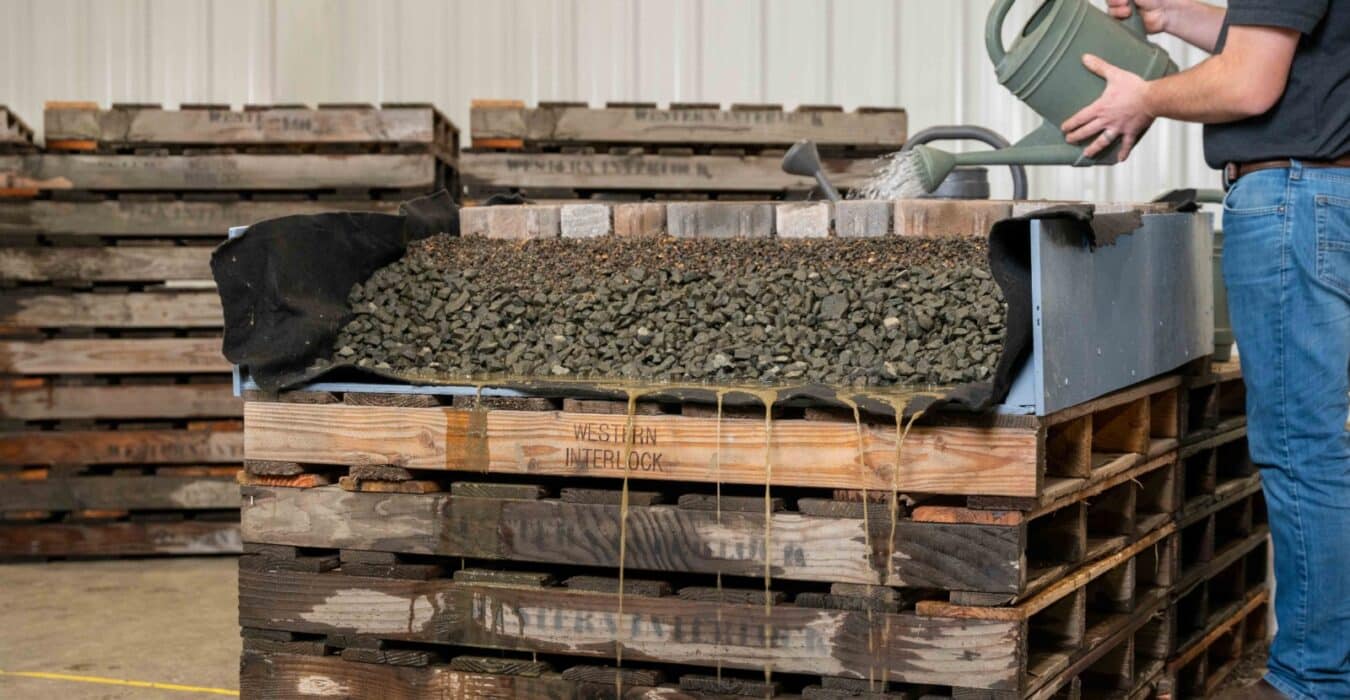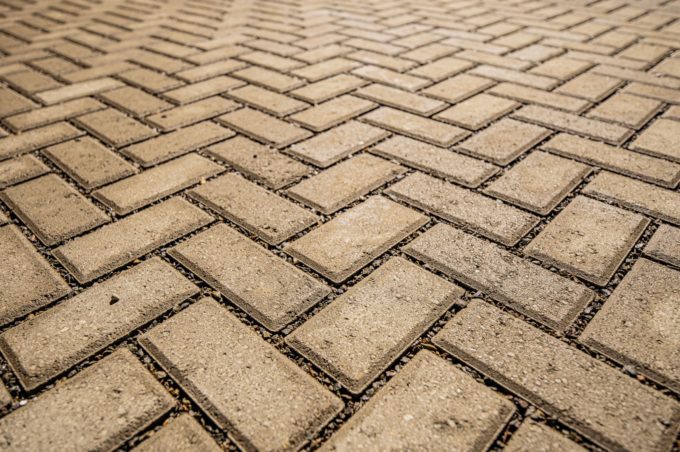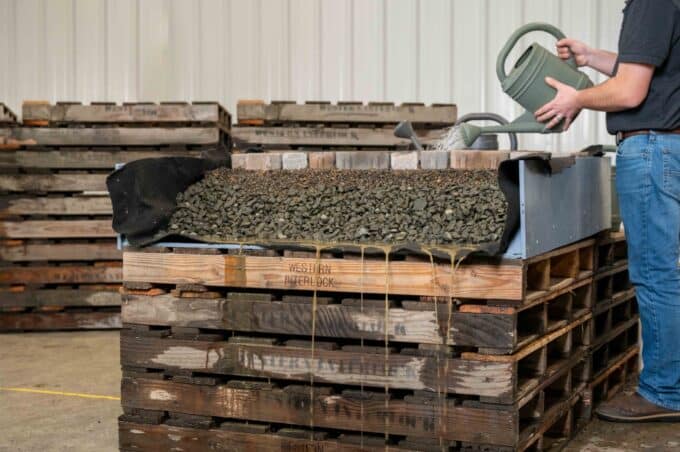Have you ever wondered what makes permeable pavers … permeable? How do they work? A common misconception in the hardscaping world is that a permeable paver allows water directly through the paver itself. In reality, however, three different components actually make permeable pavers permeable.
In order to qualify as permeable pavers, they need to be able to infiltrate 100 inches of rainfall per hour, per square foot of hardscape.
In this blog post, we’ll look at the three things that allow that large amount of water to pass through the pavers.
Open-graded base working construction
The first factor that makes permeable pavers permeable is the way the paver base is constructed. A permeable paver base needs to be made up of crushed and clean aggregate that will allow water to flow at a rapid rate underneath the paver. The aggregate needs to allow for as much empty space as possible, so that water can easily filter down through the gravel.
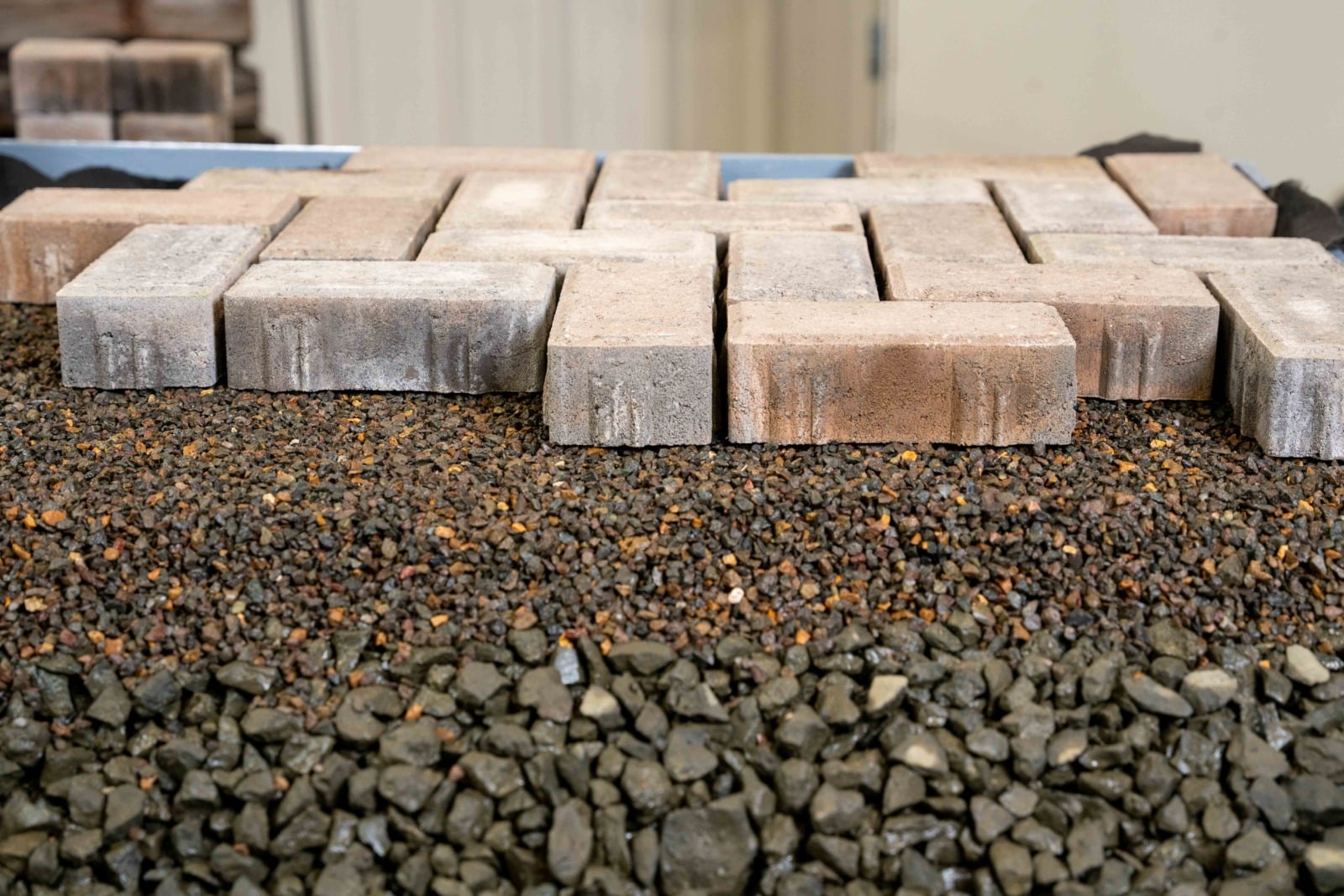
In order to accommodate the aggregate and extra space, the paver base needs to be at least 30% deeper than a standard paver base.
Finally, to complete the open-graded base construction, a much finer aggregate needs to be installed on top of the larger aggregate.
Wide paver joints
The second component of a permeable paver is the size of the paver joints. Permeable pavers require joints that are much wider than a standard paver installation. This is usually done by using spacer bars or by manually spacing.
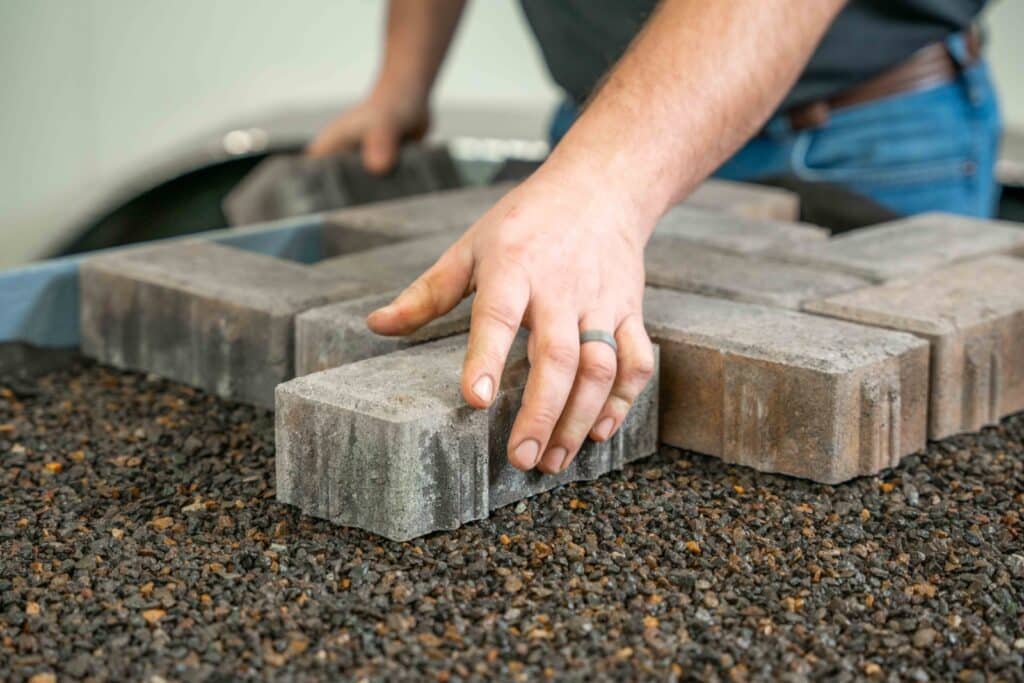
A standard paver will have a 1/16” or 1.5mm wide spacer bar to accommodate the joint sand, while a permeable paver requires a 1/4″ to 3” spacer bar. The wide joints between the permeable pavers allow you to sweep in larger joint material to allow more water through the joints.
Clean, washed aggregate as joint material
The final component of permeable pavers is the material used in the paver joints. The joint material needs to be a clean, washed aggregate such as 1/4″-10 or HPB. Permeable pavers should not use a standard paver sand or polymeric sand in their joints, but instead should use 1/4” to 3/8” crushed gravel to allow water to filter down through the paver joints.
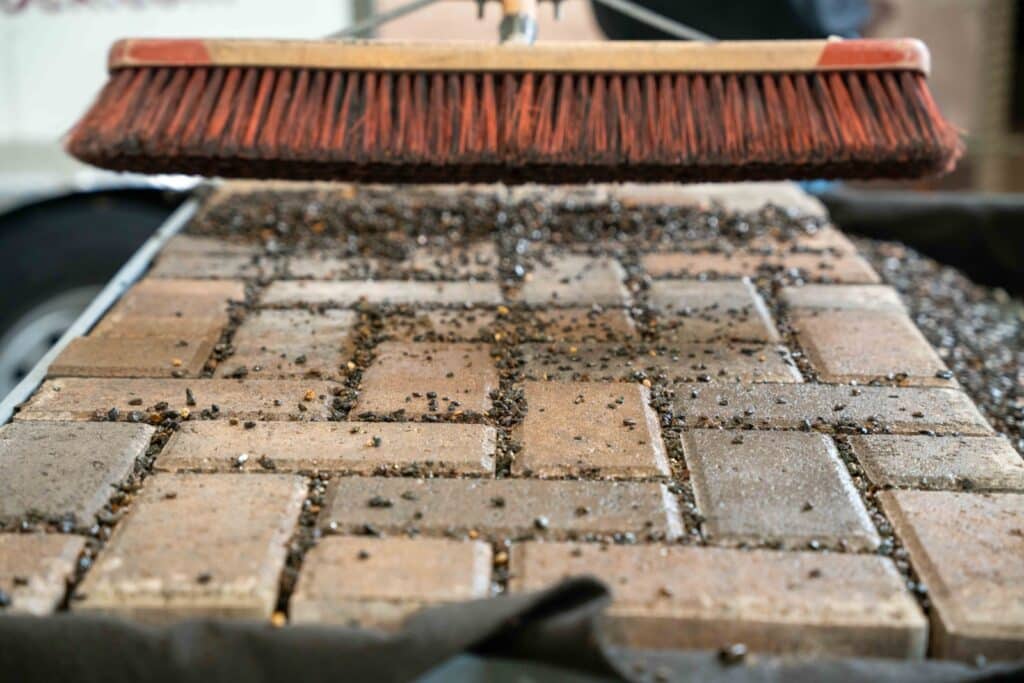
Learn more about paving work and permeable pavers
If you make sure these three components are in place, your permeable pavers will actually be permeable. To learn more, watch our video about How to Install Permeable Pavers or download our Project Planning Guide to get started installing your own permeable hardscape.


